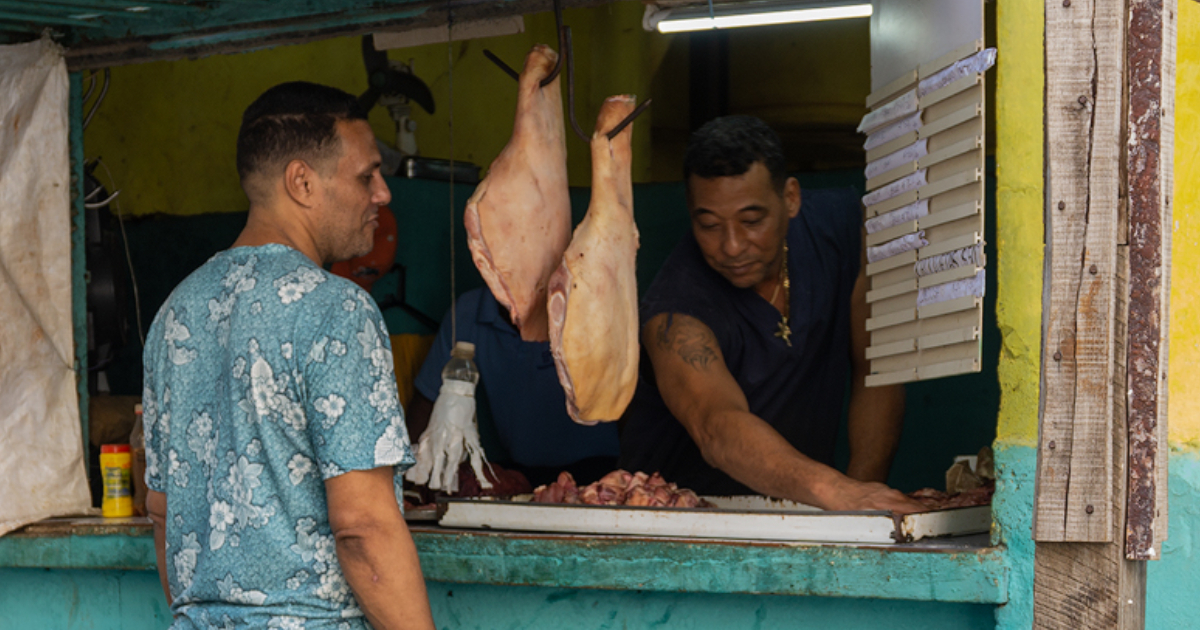The price of pork in Havana has skyrocketed to over 1,100 pesos per pound, exacerbating the inflationary pressures hitting the country. The cost of food and agricultural products in Cuba's markets continues to rise, with pork prices seeing particularly steep increases. This meat, favored by most Cubans, has become unaffordable for many.
Last summer, a pound of pork cost 550 pesos. Now, the new prices are alarming for consumers. Pork loin and chops are priced at 1,150 pesos per pound, while pork roast and leg remain at 780 pesos per pound. With the minimum wage set at 2,100 CUP under Cuba's "economic restructuring," many workers cannot afford even three pounds of pork for a family meal.
Rising Prices of Agricultural Products
Markets in Havana have recorded significant price hikes across a wide range of agricultural products. Here are some of the most notable prices, compiled by CiberCuba after visiting various markets in the city:
The price of small dry onions ranges from 300 to 350 pesos per pound, averaging 325 pesos. Scallions are sold at 100 pesos per bunch. Sweet potatoes cost between 50 and 60 pesos per pound, averaging 55 pesos. Yucca is priced between 60 and 65 pesos per pound, averaging 62.50 pesos. Malanga ranges from 140 to 150 pesos per pound, with an average of 145 pesos. Aji cachucha peppers cost 200 pesos per pound. Pumpkin is priced between 40 and 50 pesos per pound, with an average of 45 pesos. Cucumbers vary between 70 and 80 pesos per pound, averaging 75 pesos. Green beans sell for 130 pesos per bunch, while carrots have a fixed price of 170 pesos per bunch.
Fruits and Other Vegetables
Guava is sold at 60 pesos per pound. Mangoes cost between 80 and 100 pesos each, averaging 90 pesos. Banana fruit is steady at 40 pesos per pound. Lemons range from 300 to 350 pesos per pound, averaging 325 pesos. Tomatoes are priced between 170 and 200 pesos per pound, averaging 185 pesos. Pineapples sell for between 150 and 200 pesos each, averaging 175 pesos. Mamey fruit costs 150 pesos each.
The rising prices in Havana's markets highlight the severe economic crisis facing the country, where wages fail to cover basic living expenses. Given this situation, it is imperative that effective measures are implemented to control inflation and ensure the public has access to essential goods at reasonable prices. The community eagerly awaits solutions to alleviate the economic burden and improve the quality of life amid this prolonged crisis, but the regime remains unresponsive.
Frequently Asked Questions About Havana's Food Price Crisis
Here are some common questions and answers regarding the ongoing food price crisis in Havana and its impact on the population.
Why have pork prices increased so dramatically in Havana?
Pork prices have surged due to a combination of factors including inflation, supply chain disruptions, and economic mismanagement. These issues have made it difficult for producers to maintain affordable prices.
How are Havana residents coping with the high food prices?
Residents are struggling to cope with the high food prices. Many are cutting back on essential items and seeking alternative, more affordable food sources. The economic strain is palpable across the city.
What measures can be taken to control inflation in Cuba?
To control inflation, Cuba needs comprehensive economic reforms, better market regulation, and increased productivity in agriculture. Addressing corruption and ensuring efficient distribution of resources are also crucial steps.
What is the government's response to the food price crisis?
The government's response has been largely inadequate, with few effective measures implemented to address the root causes of the crisis. Many citizens feel that the regime is not doing enough to alleviate their economic hardships.
